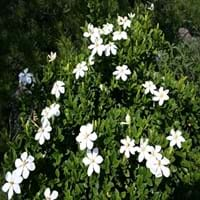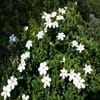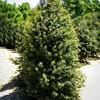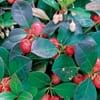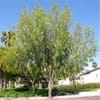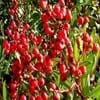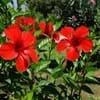What is
Life Span
Perennial
Perennial
Type
Broadleaf Evergreen
Bulb or Corm or Tuber
Origin
Eastern Asia
South America, Argentina
Types
Gardenia anapetes, Gardenia candida
Not Available
Habitat
Dry Forest, Subtropical climates
Temperate Regions
USDA Hardiness Zone
7-10
5-9
AHS Heat Zone
Not Available
9-1
Sunset Zone
21,22
21,22
Habit
Prostrate/Trailing
Clump-Forming
Information
Plant Size
Minimum Height
15.20 cm
99+
10.20 cm
99+
Minimum Width
60.00 cm
99+
5.10 cm
99+
Plant Color
Flower Color
White, Ivory
Light Blue, Light Purple, Silver, Sky Blue
Flower Color Modifier
Bicolor
Bicolor
Fruit Color
Not Available
Not Available
Leaf Color in Spring
Dark Green
Green, Light Green, Gray Green
Leaf Color in Summer
Dark Green
Light Green
Leaf Color in Fall
Dark Green
Several shades of Green
Leaf Color in Winter
Dark Green
Light Green
Shape
Leaf Shape
Elliptic
Grass like
Thorns
No
No
Season
Plant Season
Spring, Summer, Fall, Winter
Spring
Growing Conditions
Sunlight
Full Sun, Partial Sun
Full Sun, Partial Sun, Partial shade
Growth Rate
Medium
Medium
Type of Soil
Clay, Loam, Sand
Clay, Loam, Sand
The pH of Soil
Acidic, Neutral
Acidic, Neutral, Alkaline
Soil Drainage
Well drained
Well drained
Bloom Time
Late Spring, Early Summer, Summer, Late Summer, Early Fall, Fall
Early Spring, Spring, Late Winter
Repeat Bloomer
Yes
No
Tolerances
Shade areas
Drought
Care
Where to Plant?
Container, Ground, Pot
Container, Ground
How to Plant?
Seedlings, Stem Planting
By dividing rhizomes, tubers
Plant Maintenance
Low
Medium
Watering Plants
Watering Requirements
Do Not over Water, Keep ground moist, Never Over-water, Requires a lot of watering, Requires regular watering, Requires watering in the growing season
Average Water Needs, Do Not over Water, Requires regular watering
In Summer
Ample Water
Lots of watering
In Spring
Moderate
Moderate
In Winter
Less Watering
Average Water
Soil
Soil pH
Acidic, Neutral
Acidic, Neutral, Alkaline
Soil Type
Clay, Loam, Sand
Clay, Loam, Sand
Soil Drainage Capacity
Well drained
Well drained
Sun Exposure
Full Sun, Partial Sun
Full Sun, Partial Sun, Partial shade
Pruning
Prune in summer, Remove damaged leaves, Remove dead leaves, Remove dead or diseased plant parts
Remove damaged leaves, Remove dead branches, Remove dead leaves
Fertilizers
All-Purpose Liquid Fertilizer, Magnesium, Nitrogen, Potassium
All-Purpose Liquid Fertilizer
Pests and Diseases
Mealybugs, Spider mites, Whiteflies
Slugs, Snails
Plant Tolerance
Shade areas
Drought
Facts
Flowers
Showy
Showy
Flower Petal Number
Double, Semi-Double
Single
Fruits
Showy Fruit
No
No
Edible Fruit
No
No
Fragrance
Fragrant Flower
Yes
Yes
Fragrant Fruit
No
No
Fragrant Leaf
No
Yes
Fragrant Bark/Stem
No
No
Showy Foliage
Yes
No
Showy Bark
No
No
Foliage Texture
Fine
Medium
Foliage Sheen
Glossy
Matte
Evergreen
No
No
Invasive
No
No
Self-Sowing
No
Yes
Attracts
Bugs, Insects, Leaf Hoppers
Bees, Birds, Hummingbirds
Allergy
Asthma, breathing problems
Not Available
Benefits
Uses
Aesthetic Uses
Beautification, Landscape Designing, Showy Purposes
Showy Purposes
Beauty Benefits
Good for skin and hair
Not Available
Edible Uses
Yes
No
Environmental Uses
Air purification, Food for insects, Prevent Soil Erosion, Shelter for wildlife, Very little waste
Air purification
Plant Benefits
Medicinal Uses
Abdominal Disease, Abscess, Acid Reflux
No Medicinal Use
Part of Plant Used
Fruits, Leaves, Root
Flowers
Other Uses
Air freshner, Economic Purpose, Employed in herbal medicine, Medicinal oil, Used for its medicinal properties
Not Available
Used As Indoor Plant
Yes
Yes
Used As Outdoor Plant
Yes
Yes
Garden Design
Container, Feature Plant, Foundation, Groundcover, Mixed Border, Tropical
Container, Lawns and Turf, Mixed Border, Rock Garden / Wall, Wildflower
Scientific Name
Botanical Name
GARDENIA jasminoides 'Radicans'
Ipheion uniflorum
Common Name
Gardenia
Spring Starflower, Springstar
In Hindi
बौना गार्डेनिया
Spring Starflower
In German
Dwarf Gardenia
Frühling Borretsch
In French
Gardenia Dwarf
Spring Starflower
In Spanish
Gardenia enana
primavera Flor de estrella
In Greek
νάνος Gardenia
άνοιξη starflower
In Portuguese
Gardenia Dwarf
primavera Starflower
In Polish
Dwarf Gardenia
Wiosna Starflower
In Latin
Gardenia Dwarf
Spring Starflower
Classification
Kingdom
Plantae
Plantae
Phylum
Tracheophyta
Magnoliophyta
Class
Magnoliopsida
Lilopsida
Order
Rubiales
Asparagales
Family
Rubiaceae
Liliaceae
Genus
Gardenia
Ipheion
Clade
Angiosperms, Asterids, Eudicots
Angiosperms, Monocots
Tribe
Gardenieae
Gilliesieae
Subfamily
Cinchonoideae
Allioideae
Number of Species
140
99+
Not Available
|
||
|
||
|
